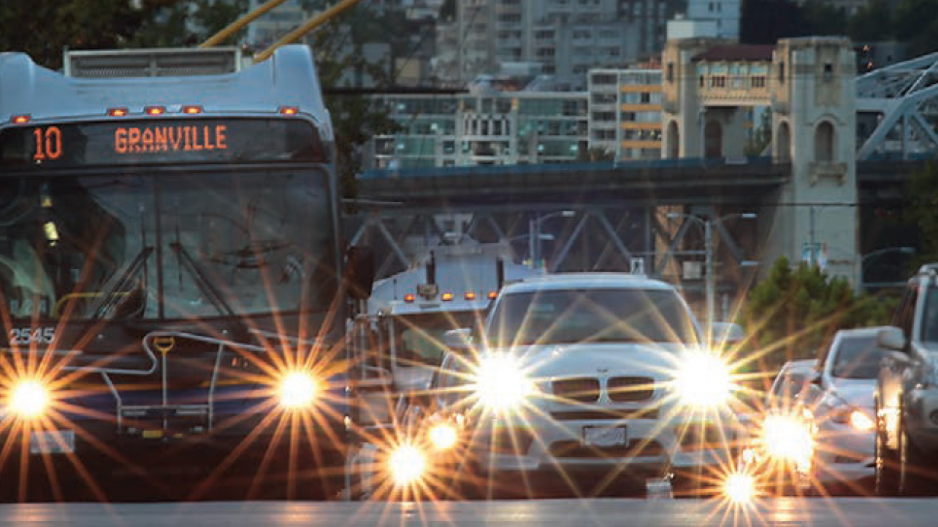The priorities for business, come election time, don’t always reflect the concerns of ordinary citizens. They tend to focus on issues like taxation, red tape and fiscal policies.
But according to a new Greater Vancouver Board of Trade (GVBOT) membership survey on provincial election issues, the top three concerns for business are the same ones consistently identified by the average Lower Mainlander: unaffordable housing, gridlock and lack of affordable child care.
“When we asked people to identify individual issues … housing affordability and cost of living screamed up the charts in a manner that we’ve never seen before,” said GVBOT CEO Iain Black. “The housing affordability is a big deal now for business because we’re having trouble attracting people to live in this region.”
B.C. voters go the polls on May 9. Last week, for the first time, the GVBOT published a provincial election platform that reflects the top concerns and priorities for business. It was based on a comprehensive membership “scorecard” survey conducted last year, and on a more recent annual membership survey focused on election issues.
Out of 10 top planks, taxes come in at No. 6. Transportation (No. 1), housing affordability (No. 2) and cost of living (No. 3) are the top three concerns. In other words, the biggest impediments to business in the Lower Mainland are lifestyle issues ranging from lack of affordable child care to the absence of ride-sharing services like Uber and Lyft.
The Business Council of BC’s election wish list is a bit more traditional, from a business standpoint. Its top priorities include:
•implementing all recommendations of the Commission on Tax Competitiveness, including changes to the PST;
•increasing funding for graduate programs, especially for fields of study related to innovation and technology; and
•modernizing and streamlining the permitting for natural resource, transportation and infrastructure projects.
On February 21, B.C. voters will get a preview of the BC Liberal Party’s platform in the form of the provincial budget. Black said the B.C. government is in the enviable position of having such a strong balance sheet that it has the economic wherewithal to address some key issues.
“We are, as a province, the envy of the nation, from a fiscal standpoint. We have a government who actually is in a position to make some choices about what they might do. You look at Ontario, they’re virtually bankrupt. There’s no wiggle room there for them to be creative about serving the electorate.”
In its November second quarterly report, the B.C. government forecast a $2.2 billion surplus for the 2016-17 fiscal year, thanks largely to a windfall in taxes generated from a hot real estate market.
But a Supreme Court of Canada ruling in November will have a significant impact on future B.C. budgets. It overturned a 2002 provincial government decision to strip teachers of their right – enshrined in collective bargaining – to set limits on class size and composition.
Last month, in response to the ruling, the government announced it would hire more than 1,000 teachers and start building new classrooms. The BC Teachers’ Federation has estimated it will cost the government $250 million to $300 million a year to return to B.C.’s pre-2002 class-size and composition requirements.
But Black thinks that estimate is low.
Even so, the government’s finances are in good shape, and addressing issues like housing isn’t strictly a money matter.
Werner Antweiler, associate professor at the University of British Columbia’s Sauder School of Business, said additional public school funding is long overdue, anyway, and should not pose a problem from a budgeting perspective.
“The education file was the BC Liberals’ weak spot – or should I say blind spot – and the [Supreme Court of Canada] has kind of put them back on track.”
Black said the province has already committed significant funds to affordable housing projects that aren’t getting built, thanks to municipal foot-dragging.
He added that the province needs to start holding municipal feet to the fire. Black pointed out that there’s a backlog of affordable housing units that have funding commitments but have yet to be built.
“The province has a hammer to say, ‘We’ll give you the money, but we expect this thing to be built within 14 to 16 months, not seven years,’” Black said.
High housing prices aren’t the only thing making the Lower Mainland unaffordable. Transportation issues compound the problem, because they limit workers’ ability to live in more affordable suburbs and get to work on time.
According to the GVBOT’s surveying, the top priority for the provincial government should be expanding rapid transit into Surrey and Langley, followed by building the Broadway Millennium Line extension and replacing the George Massey Tunnel with a new bridge.
Antweiler agreed that transportation should be the provincial government’s key policy.
“As far as the next budget is concerned, the provincial government needs to show more leadership on the urban transportation file and work together with the Metro mayors.”
But paying for all that new infrastructure remains a major obstacle. The GVBOT urges the provincial government to institute tolling or road pricing to help generate the billions of dollars needed for the transit infrastructure.
It’s also urging the provincial government to lift restrictions on ride-sharing companies like Uber and Lyft, saying the lack of such options contributes to a congestion problem that costs the Greater Vancouver region an estimated $1.4 billion annually.
Other key policy issues the GVBOT wants the provincial government to implement include:
•exempting PST on capital expenditures for business;
•supporting the Trans Mountain pipeline expansion to ensure it gets underway on time;
•removing barriers that prevent increased housing density and diversity; and
•protecting the region’s limited industrial land base. •




